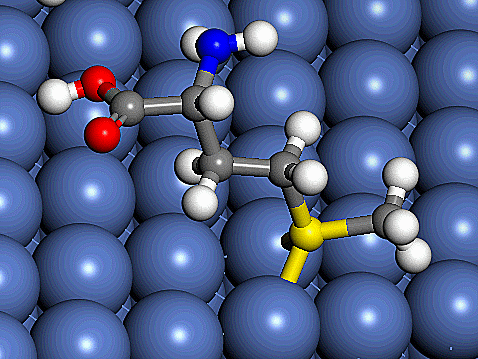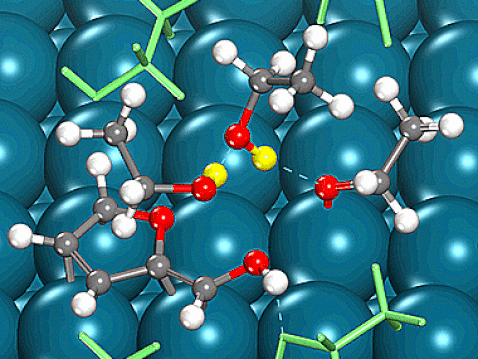 | Chemical Engineering
| Chemical Engineering
"Understanding and designing the atomic scale catalyst features which govern molecular transformations for a wide range of applications."
The multiscale modelling in energy and catalysis (MMEC) group at IITH uses quantum mechanical ab initio density functional theory (DFT) simulations for the rational design of heterogenous catalysts used for the sustainable production of fuels, materials and chemicals. The ab initio calculations provides a mechanistic insight of the reaction which helps in engineering the catalyst.
1. Biomass to value added fuels an chemicals: Developing an integrated fermentation and catalysis process wherein biomass derived platform molecules obtained from the fermentation of waste biomass could be catalytically upgraded to value added fuels and chemicals.
2. High entropy alloys: Understanding the diffusion, segregation and oxidation behaviour of high entropy alloys using Density Functional Theory (DFT) and Molecular Dynamic (MD) Simulations.
3. Reduction of Nitroarenes: Hydrogenation of nitroarenes to aniline is an important route for the synthesis of value-added chemicals, pharmaceuticals etc. DFT simulations in combination with experiments have been used to understand the role of oxygen vacancies on CuO surface in the reduction of nitroarenes to aminoarenes.
4. Hydrodechlorination of Chlororganics: Catalytic hydrodechlorination (HDC) has been used as a method for the elimination of chlororganics from wastewater. DFT simulations in combination with Micro kinetic modelling are used for the rational design of transition state metal-based catalyst for the HDC reactions.


1. K. Rajendran, J. Yadav, T.S. Khan, M.A. Haider, S. Gupta* & D. Jagadeesan* “Oxygen Vacancy-Mediated Reactivity: The Curious Case of Reduction of Nitroquinoline to Aminoquinoline by CuO” J. Phys. Chem. C, 2023, 127, 18, 8576-8584.
2. C.S. Shenoy, T.S. Khan, K. Verma, M. Tsige, K.C. Jha, M.A. Haider* & S. Gupta* “Understanding the origin of structure sensitivity in hydrodechlorination of trichloroethylene on a palladium catalyst” React. Chem. & Eng., 2021, 6, 2270-2279.
3. K. Rajendran, N. Pandurangan, C.P. Vinod, T.S. Khan, S. Gupta*, M.A. Haider, & D. Jagadeesan* “CuO as a reactive and reusable reagent for the hydrogenation of nitroarenes”, Applied Catalysis B: Environmental,2021, 297, 120417.